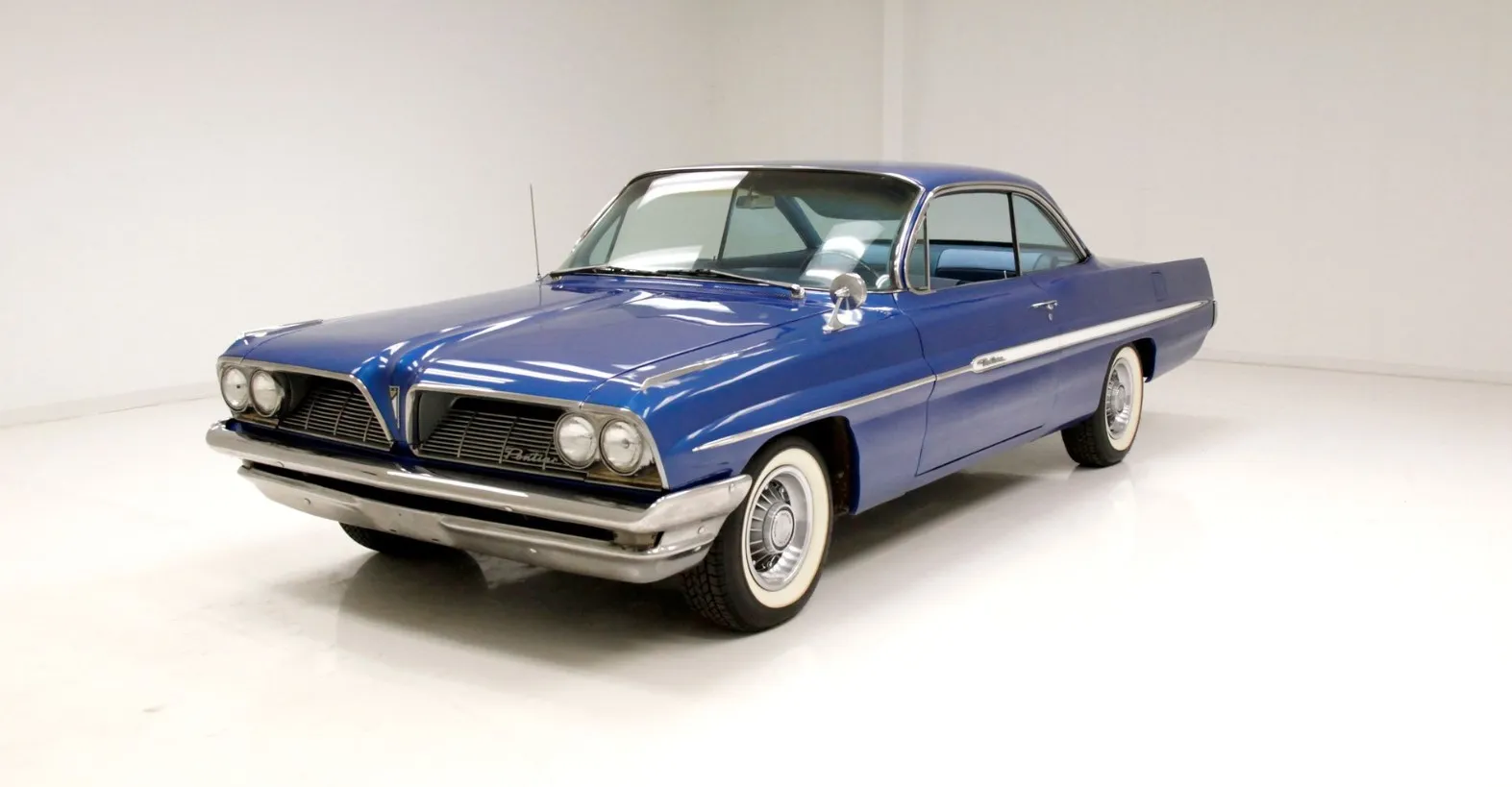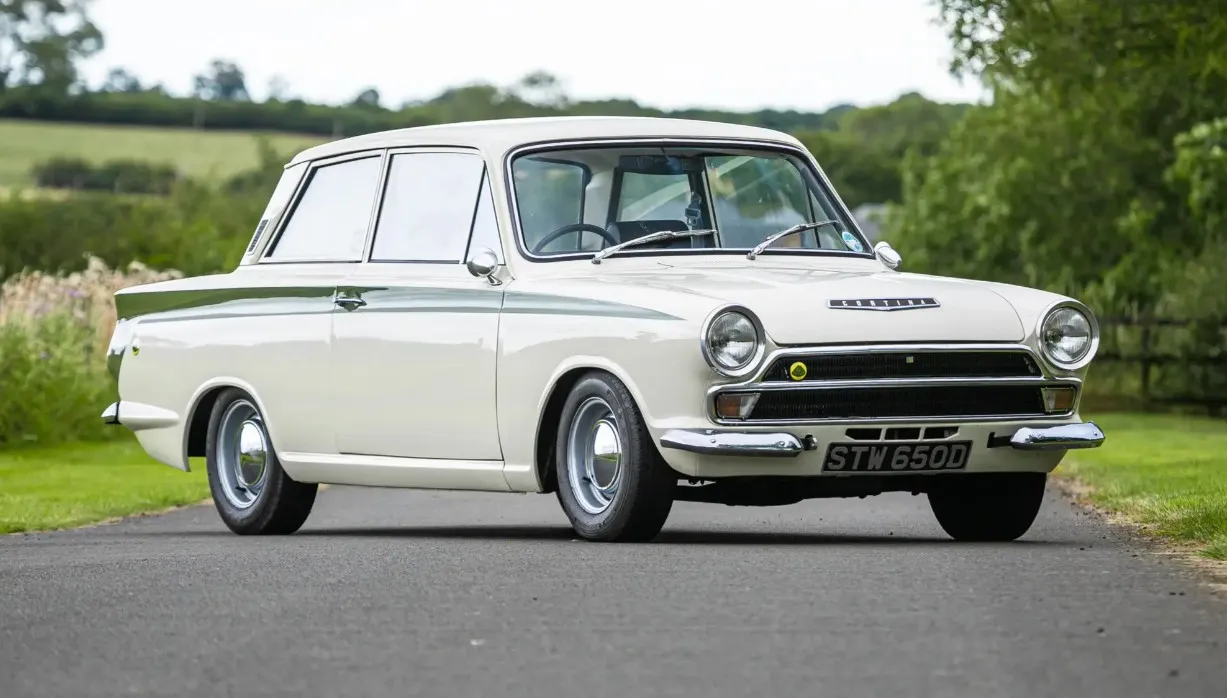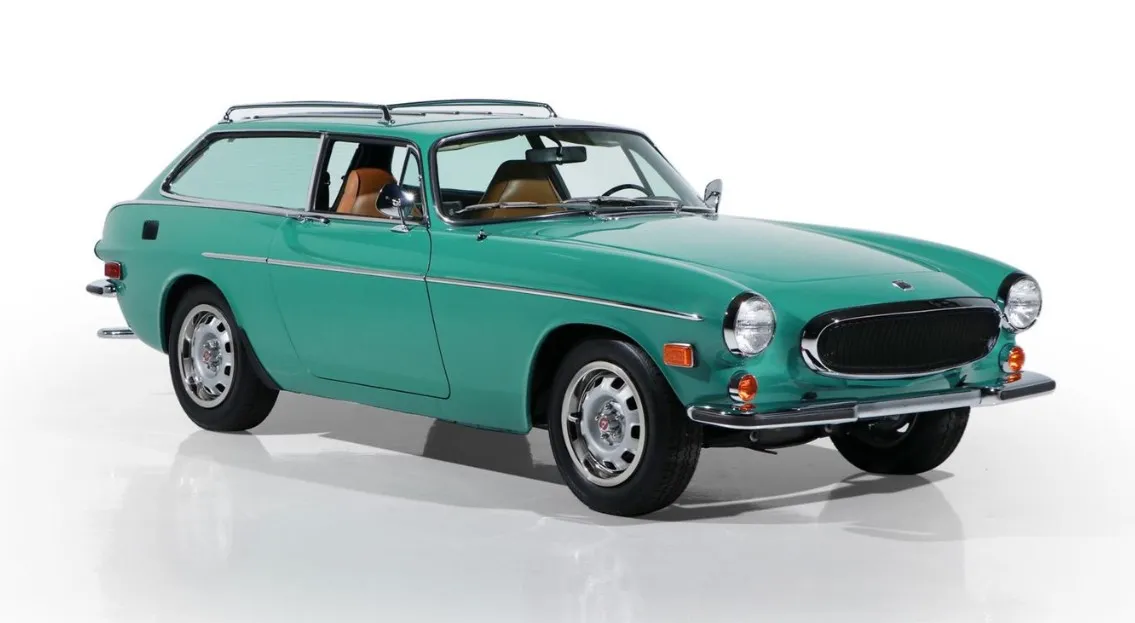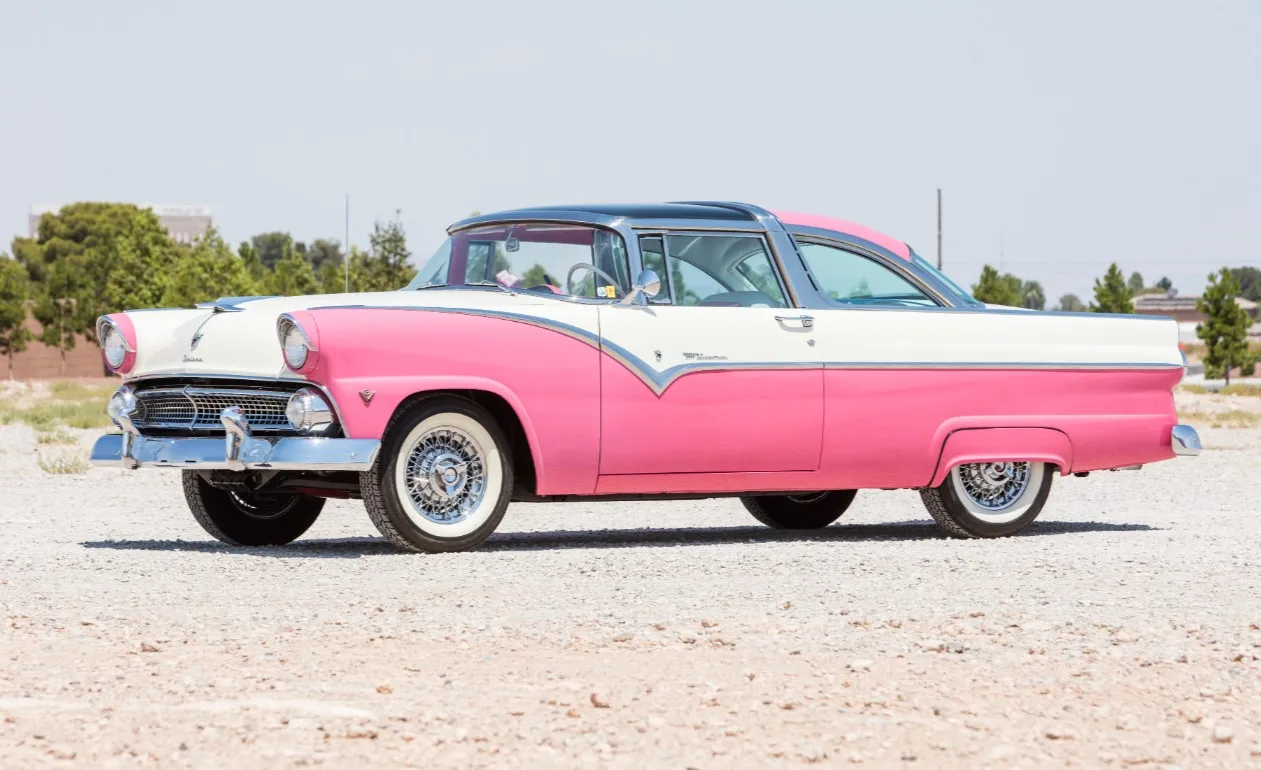The 1960 Studebaker Lark is a car that stands as a testament to ingenuity and resilience in the American automotive industry. As one of the earliest compact cars of its era, the Lark was Studebaker’s answer to the growing demand for smaller, more economical vehicles in a market dominated by large, gas-guzzling sedans. In a time when the automotive giants were struggling to adjust to a changing consumer landscape, Studebaker's Lark was a breath of fresh air—an innovatively designed car that not only saved the company but also set new standards for compact car design.
A New Direction: The Birth of the Studebaker Lark

The late 1950s were a challenging time for Studebaker, a company that had been producing cars since the early 1900s. Faced with stiff competition from the Big Three—Ford, General Motors, and Chrysler—Studebaker needed a game-changer to stay afloat. That game-changer came in the form of the Lark, a compact car designed to meet the needs of a market increasingly concerned with fuel efficiency and economy.
Introduced in 1959, the Studebaker Lark was a bold departure from the large, heavy cars that had dominated American roads for years. It was smaller, lighter, and more economical, yet it didn’t compromise on the quality and luxury that Studebaker was known for.

The Lark was available in both two-door and four-door models, with options ranging from a simple sedan to a more upscale hardtop coupe and convertible.
The success of the 1959 Lark was immediate, and it was clear that Studebaker had struck a chord with consumers. The 1960 model built on this success, offering refinements and updates that made the Lark even more appealing to a broad audience.
1960 Studebaker Lark: Design and Innovation

One of the most remarkable aspects of the 1960 Studebaker Lark was its design. At a time when most cars were still sporting tailfins and excessive chrome, the Lark embraced a more restrained, European-inspired aesthetic. It was compact, but not cramped, offering ample interior space for passengers and luggage despite its smaller footprint.
The 1960 Lark featured clean, uncluttered lines with a wide, confident stance. The front grille was simple yet elegant, with a horizontal bar design that gave the car a distinctive face.
The Lark’s proportions were well-balanced, making it look modern and sophisticated without being flashy. This design simplicity was a key factor in the car’s appeal, as it resonated with consumers looking for something different from the excesses of the 1950s.

Inside, the 1960 Lark continued to impress. Studebaker managed to create a spacious cabin that belied the car’s compact dimensions. The seats were comfortable and supportive, with high-quality materials used throughout.
The dashboard was functional and straightforward, with all the necessary gauges and controls within easy reach of the driver. Options like air conditioning, power steering, and a push-button radio added a touch of luxury to the Lark, making it an attractive choice for buyers who wanted a small car without sacrificing comfort.
Under the Hood: Performance and Efficiency

The 1960 Studebaker Lark was offered with a range of engines that provided a good balance between performance and fuel efficiency. The standard engine was a 170 cubic inch (2.8-liter) inline-six, which produced around 90 horsepower.
This engine was designed with economy in mind, offering good fuel efficiency for the time while still providing adequate power for city and highway driving.
For those who wanted a bit more performance, Studebaker offered an optional 259 cubic inch (4.2-liter) V8 engine, which produced 180 horsepower.
This V8 gave the Lark a surprising amount of power for a compact car, allowing it to compete with larger vehicles in terms of acceleration and top speed. The V8-powered Lark was particularly popular among younger buyers who wanted a small car with a bit of muscle.

The Lark’s suspension system was designed to provide a smooth ride, even on rough roads. It featured independent front suspension with coil springs, while the rear used leaf springs and a solid axle. This setup provided a good balance between comfort and handling, making the Lark a pleasure to drive in a variety of conditions.
The Lark’s braking system was also noteworthy, with power-assisted brakes available as an option. This was a relatively rare feature for a compact car in 1960 and demonstrated Studebaker’s commitment to safety and innovation.
The Lark’s Impact on the Automotive Industry

The introduction of the Studebaker Lark was a turning point not only for Studebaker but for the entire American automotive industry.
The Lark proved that there was a significant market for smaller, more economical cars in the United States—a market that would continue to grow throughout the 1960s and beyond.
The success of the Lark forced other manufacturers to take notice and begin developing their own compact cars.
Ford’s Falcon, Chevrolet’s Corvair, and Chrysler’s Valiant were all responses to the Lark’s success, and they helped to establish the compact car segment as a permanent fixture in the American automotive landscape.

The Lark also played a crucial role in keeping Studebaker in business during a difficult period. The revenue generated by the Lark allowed Studebaker to continue operating and investing in new models, even as the company faced ongoing financial challenges.
While Studebaker would eventually cease production in 1966, the Lark remains a symbol of the company’s resilience and innovation.
The Lark’s Place in Classic Car Culture

Today, the 1960 Studebaker Lark is celebrated as a classic car that represents a unique moment in American automotive history. Its combination of compact size, stylish design, and quality construction makes it a favorite among collectors and enthusiasts.
One of the most appealing aspects of the Lark is its relative rarity. While many other cars from the 1960s are still relatively common, the Lark’s lower production numbers make it a more exclusive find for collectors. This rarity, combined with the car’s historical significance, has helped to increase its value and desirability in the classic car market.

Restoring a 1960 Studebaker Lark can be a rewarding project, as many of the original parts are still available through specialized suppliers and online marketplaces. The Lark’s straightforward design and construction also make it a relatively easy car to work on, even for amateur mechanics.
For those who appreciate the history and charm of vintage automobiles, the 1960 Studebaker Lark offers a unique blend of practicality and nostalgia. It’s a car that tells a story—a story of innovation, determination, and the enduring appeal of classic cars.
The Legacy of the 1960 Studebaker Lark

The 1960 Studebaker Lark is more than just a classic car; it’s a symbol of an era when the American automotive industry was beginning to change. The Lark’s success demonstrated that there was a demand for smaller, more efficient vehicles, and it paved the way for the compact cars that would come to dominate the market in the following decades.
For collectors and enthusiasts, the Lark represents a unique piece of automotive history. Its stylish design, quality construction, and innovative features make it a car worth preserving and celebrating.

Whether you’re restoring a Lark to its original glory or simply admiring it at a classic car show, there’s no denying the enduring appeal of this compact classic.
As we look back on the legacy of the 1960 Studebaker Lark, it’s clear that this car was ahead of its time. It’s a reminder that sometimes, the most significant changes in history come from the most unexpected places. In the case of the Lark, that change came from a small, struggling car company that dared to think differently—and in doing so, left an indelible mark on the world of classic cars.



